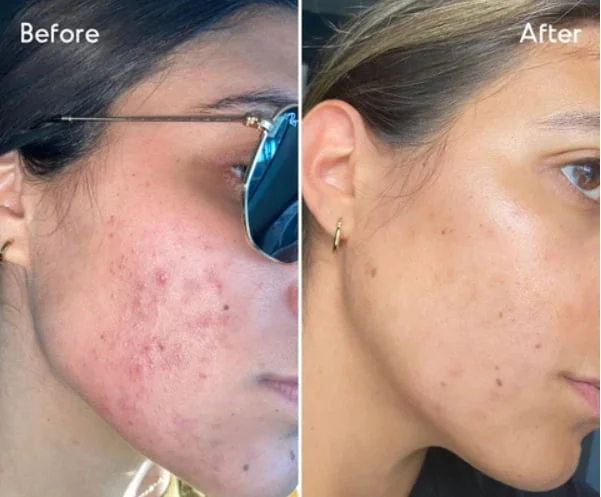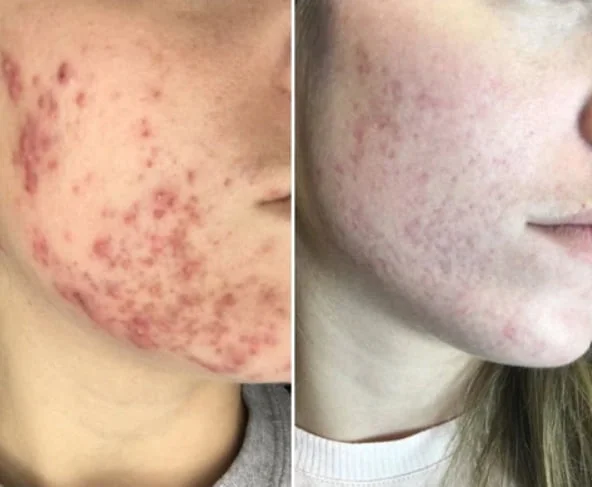Table of Contents
When you have a major issue with your skin, like acne or wrinkles, it’s important to find the best products that are going to fix it. Mandelic acid is one such product, and it can do wonders for your face. It’s even good enough to be used during pregnancy, making it a versatile treatment overall. But what is mandelic acid? How does it work? Why is it so effective? What are the side effects? The article is here to explain everything you need to know about mandelic acid.
What Does Mandelic Acid Do for Your Skin?

Mandelic acid is a fruit acid that exfoliates the skin and removes dead skin cells. It is also antimicrobial, meaning it inhibits the growth of bacteria on your skin, which helps prevent acne.
Mandelic acid is often used as an alternative to salicylic acid because it can be less irritating to the skin and more effective at treating blemishes. Mandelic acid works by dissolving the “glue” that holds dead skin cells together. This allows them to shed more easily, which means that your face will feel smoother after treatment. It also helps to stimulate collagen production, which results in younger-looking skin over time.
What Percentage of Mandelic Acid Is Effective?
Mandelic acid is an alpha hydroxy acid that is used in cosmetic surgery. It is a naturally occurring substance that is derived from bitter almonds. It has been used as a skin-bleaching agent for over centuries, and it is still used today for this purpose. Mandelic acid works by reducing hyperpigmentation and hyperkeratosis (thickening of the skin). It also increases collagen production and elastin which makes the skin smoother.
Mandelic acid has been shown to be effective in treating melasma, acne, and psoriasis. It also reduces fine lines and wrinkles by removing dead skin cells from the surface of the skin.
The success rate of mandelic acid depends on what kind of treatment you’re having. For example:
- For wrinkles — 15% – 20% reduction in fine lines after four months of twice-weekly treatment.
- For acne — 80% reduction in acne breakouts after three months of twice-weekly treatment.
When do People need to Use Mandelic Acid Treatment?

- Skin Types: All types of skin can benefit from mandelic acid treatment. However, since it is an exfoliant, oily or acne-prone skin types may require more frequent use at lower concentrations. When selecting your mandelic acid skincare product, consider whether you have dry or sensitive skin that reacts poorly to exfoliants (products or procedures). If so, look for formulations with lower concentrations of 10% or less.
- Acne: Mandelic acid has been shown to be effective in reducing sebum production by up to 40%. This makes it an ideal choice for those with oily or acne-prone skin who are looking for something other than benzoyl peroxide or salicylic acids which can cause photosensitivity reactions.
How Long Does Mandelic Acid Take to Work?
Mandelic acid is a chemical exfoliant that you can find in skincare products like cleansers and toners. It’s one of the gentlest and most effective ingredients for exfoliating the skin.
Mandelic acid works by dissolving dead skin cells and unclogging pores, allowing new skin to grow. It also helps even out your complexion and reduces acne breakouts.
The exact time it takes for mandelic acid to work depends on how many times you use it and how long you’ve been using it. Some people see results after just one use, while others need several applications before they start seeing results!
If you’re new to using mandelic acid, start out once or twice a week until your skin adjusts. Once your skin has acclimated to the product, you can increase its frequency if needed.
Things To Consider After Mandelic Acid Treatment
After your mandelic acid peel treatment, you’ll want to take some time to consider your next steps in order to ensure the best results possible. Here are three things you should consider after your mandelic acid peel treatment:
1. Don’t Use Any Other Peels While Your Skin Is Healing
Some people like to use weekly glycolic or salicylic acid treatments after their mandelic acid peel to help speed the recovery process, but I personally don’t recommend it. Use an only moisturizer for 3-4 days after your treatment, and then slowly introduce other products back into your routine one at a time (like toner and serum) until you’re back up to full strength again.
2. Don’t Pick at Your Skin!
This is especially important right after the peel has been applied. Because that’s when it’s most vulnerable to picking off any dead skin cells that are ready to shed anyway. Picking at your face can cause scarring and damage your skin’s natural barrier function — which is exactly what we want our peels doing for us!
3. Avoid Products with Alcohol and Retinol
After treatment, avoid products that contain alcohol or retinol (vitamin A). These ingredients can cause irritation and increase redness on your skin, which could lead to breakouts and hyperpigmentation (dark spots). The same goes for products that have high levels of glycolic acid; these are also known as alpha-hydroxy acids (AHAs) and can cause sensitivity after this type of procedure.
4. Moisturize Your Skin Regularly
A properly moisturized skin surface helps prevent dryness and flaking after any chemical peel procedure. Mandelic acid peels can cause slight irritation of the skin’s surface due to their mild exfoliating properties. To avoid this irritation from becoming problematic, make sure you use a moisturizing cream regularly after your treatment.
5. Avoid Tanning Beds
If you want to maintain your results from this procedure, avoid tanning beds at all costs! Tanning beds are known to accelerate aging and cause damage to the DNA within cells called melanocytes, which produce melanin — the pigment responsible for giving skin its coloration.
Mandelic Acid Benefits
Mandelic acid has a wide range of benefits.
It helps regulate oil production and can be effective against acne and acne scars.
- When applied to your skin, mandelic acid exfoliates the top layer, encouraging new skin cells to come to the surface for a fresh and smooth appearance.
- Thirdly, mandelic acid exfoliates the upper skin layer without causing inflammation or irritation on your skin, and it can promote collagen growth.
- Finally, mandelic acid fights hyperpigmentation caused by age spots, sun damage, and melasma.
Overall, there are plenty of reasons to use citric acid daily on your skin.
For more information and to get mandelic acid treatment get in touch with our Vanity Cosmetic Surgery Hospital.










